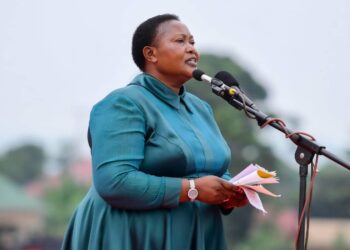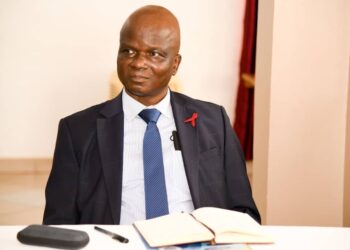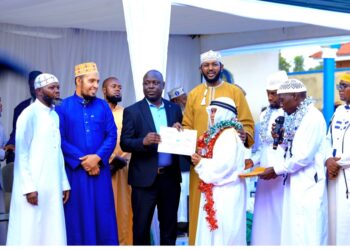BUILDING A RESILIENT INTEGRATED AND SELF-SUSTAINING ECONOMY
The people below the poverty line in 1986 were above 56%. The people below the poverty line today are 21.4%. To determine who is below the poverty line and who is not, we use a number of considerations such as the calories intake per day, access to education, access to clean water etc. This is a dramatic fall in poverty figures. However, some of the causes for the fall of poverty figures are on account of Government action by spending on education, health, water, etc.
If the whole population had taken advantage of these Government efforts and responded to the call to join the money sector, the poverty figures would be much better. According to the census figures that I always quote, only 32% of the homesteads are the only ones that are in the money economy. 68% of the homesteads are not part of the money economy. Yet, only 20% are below the poverty line. This, therefore, means that many in the 68%, although they are not part of the money economy, nevertheless, they are not below the poverty line. How much more would we have achieved if these 68% were part of the money economy?
That is why, therefore, the NRM insists on waking up all the Ugandans so that they become part of the money economy. The sectors of the modern economy are four and Uganda has potential for all of them. They are as follows: commercial agriculture (coffee, fruits, dairy farming, fish farming, food crops etc. for all the small farmers and ranching, maize, sugar-cane, tobacco, cotton etc. for the medium and large-scale farmers); industries – big and small in agro-processing (coffee, fruits, dairy, maize, textiles, leather-tanning and shoes, furniture and other wood products, beef processing, sugar, pharmaceuticals, tea etc.); minerals and minerals beneficiation (copper products, steel, ceramics, solar-power batteries from lithium and nio-bium, cement, phosphates fertilizers, computers from coltan, tungestan from wolfram, products from vermiculite, cut granite for road-building, glass, nuclear energy from our uranium etc. etc); services (hotels, banks, tourism, professional services- (medical, legal, accounting and auditing, engineering services, pastor-hood etc. etc.); and ICT (Business outsourcing – BPOs, electronics engineering, air-time, mobile money services etc).
An individual Ugandan, a family or a company can enter any of these sectors, create wealth and jobs for our people in the process. Today, we have 4,026 factories, employing a total of 600,000 people; 8,200 companies in the services sector, employing a total of 1.2m persons; a total of 1.2m commercial farmers – employing about 7.8m persons in farming and a total of 2,000 ICT companies employing 3m people (direct and indirect). Yet, all these actors are only scraping the surface of our potential.
In the past, we could not exploit this potential because we did not have the basics –part of the 10 strategic bottlenecks. In particular, we did not have electricity, the roads and the railways. This meant high electricity costs or no electricity at all, high transport costs, high internet costs because we did not have the ICT backbone. We are now in the process of solving the problem of electricity. We have enough electricity now and we are continuing to generate more electricity and to make it cheaper for manufacturers. The main roads are now good but good roads are for passengers, not for cargo. The answer to cargo is the railway transport and water-transport. The cost of electricity per unit has been US cents 8-9. I intend to bring it to US cents 5 per unit for manufacturers, big or small. The cost of transporting a container of 40 feet to Mombasa is currently US$ 3500. With the standard gauge railway, the cost will be US$.1,500 per container. That will leave us with the cost of money. The Government has decided to go through the UDB to handle the issues of the cost of money for agriculture, manufacturing, some aspects of services (tourism and hotels) and some aspects of ICT (BPOs, for instance).
Since the NRM has already addressed the other bottlenecks such as ideological disorientation, a weak state (no Army etc.) and market integration, we are now able to move decisively on building an integrated and self sustaining economy that is independent. Here independence has never meant isolation. It means participation in the World economy on an equal and comparative basis.
The mass education we have given our people is a good basis on which we can base ourselves to develop a technologically and managerially capable labour force. Even the lawyers and literate graduates are more capable of becoming commercial farmers, converting to management or entrepreneurial in any of the other sectors.
We, therefore, need two crucial areas of emphasis: a more investor friendly atmosphere – free of delays and corruption of public officials; and more wealth funds to convert our idle youth to owners of the small businesses across the four sectors. Let us cut out wasteful expenditure in the form of hastily created new Districts, Sub-counties, Town Councils etc; foreign travels, etc. The two ways – enabling FDI to come into Uganda more easily and empowering our youth with capital that does not exceed the interest rate of 12% per annum, will enable us to get rid of the remaining strategic bottlenecks: the export of unprocessed raw-materials, the under-development of agriculture and under-development of the services sector.
With these, Uganda will become a middle income country in the very short run and a first World country in the medium term. I tend to forget about the oil and gas sector. Like the other minerals, right from the beginning, we insisted on adding value to our petroleum. Although we agreed to the oil pipeline for the export of crude, we also insisted on the refinery and we also insist on the manufacturing of the raw-materials for plastics, for nitrogen based fertilizers etc. The other day, I visited a blankets manufacturing factory in Mukono. They are using imported polyester to make the blankets. In future, all these will be made here. No more imported polyester for blankets; imported Polyvinyl Chloride (PVC) for plastics; imported leather for shoes and hand bags; imported rubber for motor-bike tyres and tubes; imported starch for our pharmaceutical industries; imported industrial grade sugar for our beverage and pharmaceutical industries; imported processed copper for our transformers and cables industry; imported steel for our dams, high rise buildings, the railways, the bridges, the cars etc; imported tungesten for alloying our steel to make our war-tanks; imported lithium batteries for solar applications instead of using our lithium and nio-bium to make them here; etc. etc. How many jobs shall we create and how much money shall we generate if we do all this? The capacity is mind boggling.
I do not pay much attention to the unidimensional excitement and stampede about the 4th Industrial Revolution, intelligent machines etc. These are welcome innovations. They must, however, be part of the wider package of removing the strategic bottlenecks. Artificial intelligence will not replace food but will make its production easier. The human beings will-still need shelter, they will still need transport, they will need medicine, they will need chairs to sit on etc. Artificial intelligence will make it easier to get these needs of the human race using the appropriate products but will not eliminate them. Besides, whatever the mode of production and whatever the products, in the end, you come to our two friends: producer of a good or service and the consumer of that good or service. In the past, Africans in this area used endosho (wooden spoons) to eat. These were replaced by metallic spoons (ebijiiko). However, the relationship between the producer and the buyer remains. If the buyer does not buy, the producer will go bankrupt. Therefore, East Africa and Africa should not fail to organise itself into a strong market because, whatever the mode of production and the products, demand for those products will remain decisive for those products eternally.
Especially for Uganda, the issue of environment is very crucial. The advantages Uganda enjoys are on account of our environment. Especially for agriculture and tourism, our good environment, on account of sitting atop the African plateau between 650 and 5,009 metres above sea level, the protection of our environment is crucial. Our good climate is partly because we have huge bodies of fresh water (the Lakes), the River Nile and its tributaries, tropical forests, vast savannah and the freezing temporate climates of the mountain zones. Tropical and temporate, that is Uganda. This uniqueness gives us a very wide spectrum of possibilities – agriculture, tourism, fresh water resources, hydro-power, forest products etc. It is criminal to tamper with this. Therefore, those encroaching on forests must leave; those in the wetlands must leave; those encroaching on the Lake shores should stop; those encroaching on the River banks must stop; those cultivating wrongly on the hill-sides must stop and do things properly.
River Mpanga and Rwizi are drying up because of encroachment up-stream. This must stop. Otherwise the future of Uganda is bright. We are already on the move in terms of building an integrated economy that is self-sustaining and independent. Look at the cement sector with building industry, the cotton sector with the recovering textile industry, the wood industry with the furniture manufacturing, the food industry with the tourism sector, the milk sector with the milk factories, the tea and the tea factories, the fish with the fish factories.
We just need to expand and deepen this movement integration. We have already started. Recently, with new industrial parks, the tempo is increasing. I am quite happy with the momentum.
I thank you
Do you have a story in your community or an opinion to share with us: Email us at editorial@watchdoguganda.com











